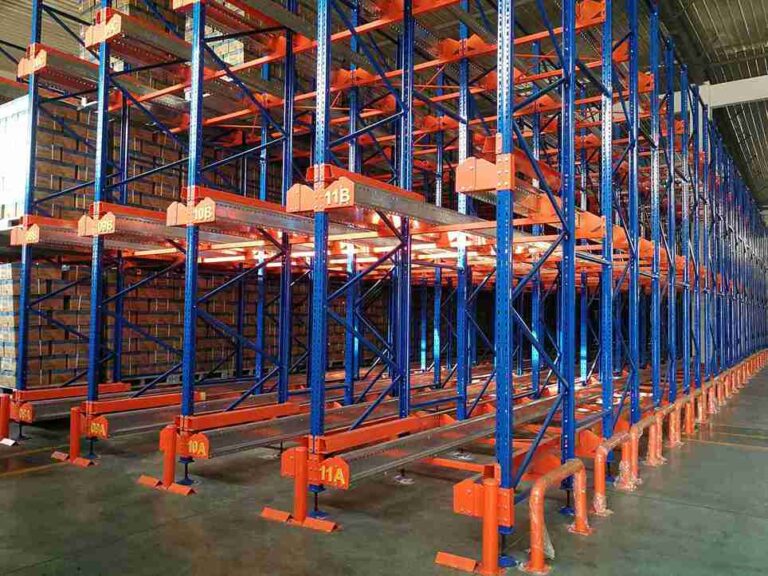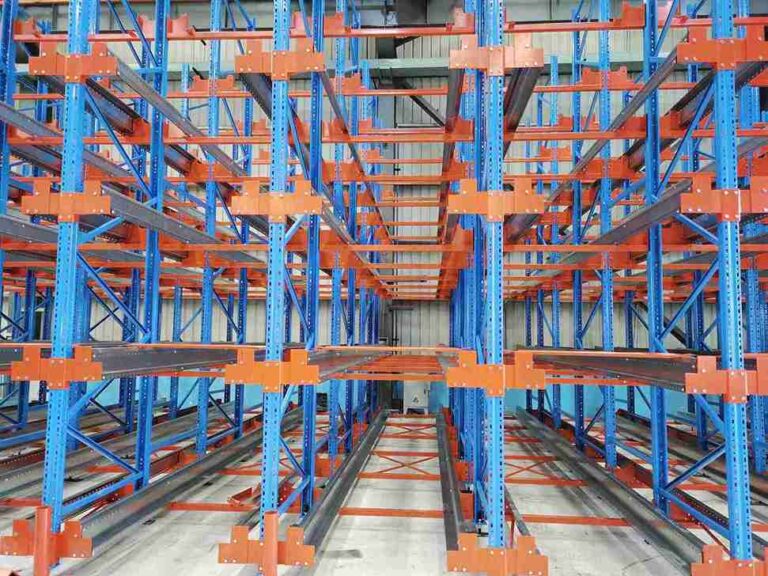📐 "First 50 Enterprise Queries Get Custom 3D Warehouse Design" Plan

Introduction
In today’s fast-paced logistics and warehousing industry, maximizing storage density, improving operational efficiency, and reducing labor costs are critical. Shuttle racking systems have emerged as one of the most advanced warehouse storage solutions, offering unparalleled shuttle racking benefits over traditional pallet racking.
This in-depth guide explores the 7 major benefits of shuttle racking systems, why they outperform conventional storage methods, and how they can transform warehouse operations. Whether in e-commerce fulfillment, cold storage, or manufacturing, understanding these shuttle racking benefits helps businesses make informed decisions.

1. Maximized Storage Density with Shuttle Racking
How Shuttle Racking Optimizes Space Utilization
Unlike traditional selective pallet racking, shuttle racking systems operate on a last-in, first-out (LIFO) or first-in, first-out (FIFO) basis, delivering high-density storage benefits. The system uses automated shuttles that move within racking channels, eliminating the need for forklift aisles.
- Deep-lane storage enables multiple pallets in a single lane, a key shuttle racking benefit.
- Narrower aisles mean more storage capacity per square foot.
- Ideal for cold storage warehouses, where space optimization is crucial.
Comparison with Other High-Density Systems
While drive-in racking and push-back racking offer high-density storage, shuttle racking benefits include better selectivity and faster load retrieval.
2. Increased Operational Efficiency & Faster Throughput
Automated Shuttle Technology Reduces Manual Handling
Traditional warehouses rely heavily on forklift operators, leading to inefficiencies. A shuttle racking system automates pallet movement, a major shuttle racking benefit that reduces labor dependency.
- Faster loading/unloading with automated shuttles.
- Reduced waiting times for forklifts, improving workflow.
- Higher throughput for high-volume warehouses.
Real-World Example: E-Commerce Fulfillment Centers
E-commerce giants like Amazon leverage shuttle racking benefits to handle peak season demand efficiently.
3. Enhanced Safety & Reduced Workplace Accidents
Minimized Forklift Traffic = Fewer Accidents
Forklift-related accidents are a major warehouse concern. Shuttle racking benefits include reduced forklift movement, lowering collision risks.
- Fewer aisle crossings enhance safety.
- Automated pallet handling reduces manual injuries.
- Better load stability with secure racking design.
OSHA Compliance & Warehouse Safety Standards
Shuttle systems align with OSHA guidelines, making them a safer alternative to drive-in racking.
4. Cost Savings on Labor & Energy Consumption
Reduced Labor Costs with Automation
Labor is a significant warehouse expense. Shuttle racking benefits include minimized forklift operator needs, leading to long-term savings.
- Lower staffing requirements for pallet handling.
- Reduced training costs versus forklift certification.
- Energy-efficient operations in cold storage.
ROI Analysis: When Does Shuttle Racking Pay Off?
While initial costs are higher than selective racking, shuttle racking benefits like labor and space savings make them cost-effective for large operations.
5. Improved Inventory Accuracy & Traceability
Automated Tracking Reduces Human Errors
Manual handling increases mispicks and lost inventory. Shuttle racking benefits include WMS integration for real-time tracking.
- Barcode/RFID compatibility for precise control.
- Automated stock rotation (FIFO/LIFO) minimizes spoilage.
- Better audit compliance for regulated industries.
Case Study: Pharmaceutical Warehousing
Pharmaceutical companies use shuttle racking benefits to maintain FDA-compliant inventory control.
6. Scalability & Flexibility for Growing Businesses
Modular Design Adapts to Changing Needs
Unlike fixed cantilever racking, shuttle systems can be expanded or reconfigured, a key shuttle racking benefit.
- Add more shuttles for increased speed.
- Expand storage lanes without major changes.
- Compatible with multi-deep configurations.
Future-Proofing Your Warehouse
As order volume grows, shuttle racking benefits include seamless scalability.
7. Ideal for Cold Storage & Temperature-Sensitive Goods
Why Shuttle Racking Dominates Cold Storage Warehouses
Maintaining consistent temperatures is critical. Shuttle racking benefits include minimized door openings, reducing energy loss.
- Faster operations mean less cold air escape.
- Reduced forklift emissions improve air quality.
- Optimized for frozen food, pharmaceuticals, and perishables.
Energy Efficiency in Cold Storage
Studies show shuttle racking benefits can cut energy costs by up to 30% in cold storage.
Conclusion: Is Shuttle Racking Right for Your Warehouse?
Shuttle racking benefits include unmatched storage density, efficiency, safety, and cost savings, making them a top choice for modern warehouses. Whether in e-commerce, manufacturing, or cold storage, integrating a shuttle system can boost productivity and reduce costs.
Before investing, consult a warehouse storage expert to assess specific needs. The right system depends on factors like inventory turnover, SKU variety, and facility layout.
FAQs About Shuttle Racking Systems
1. How much weight can a shuttle racking system handle?
Most systems support up to 3,000 lbs per pallet, but heavy-duty options exist.
2. Can shuttle racking be used with existing pallet racking?
Some systems can be retrofitted, but professional assessment is recommended.
3. What’s the maintenance cost for shuttle systems?
Maintenance is minimal—primarily battery replacements and software updates.
4. Are shuttle systems suitable for small warehouses?
They’re best for high-volume operations, but compact versions exist.
5. How does shuttle racking compare to AS/RS?
Shuttle systems are more affordable, while AS/RS offers higher automation.




